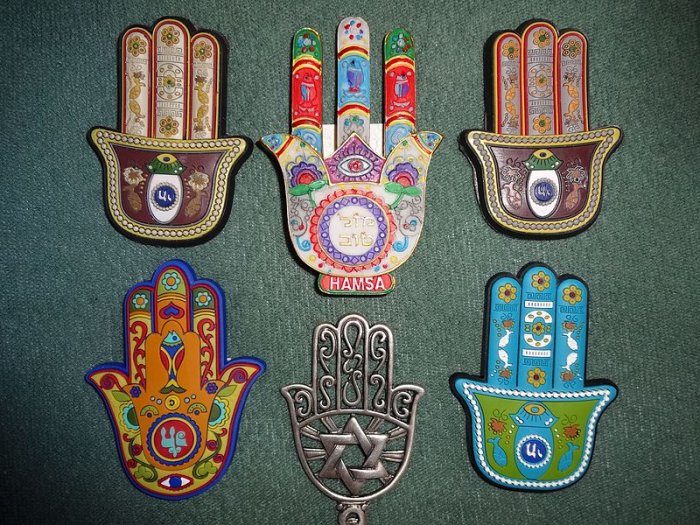Ancient Symbol Hamsa: It’s Meaning And History Explained
Ellen Lloyd - AncientPages.com - Hamsa is an ancient, powerful symbol that is often carried as an amulet to invoke the hand of God, or to counteract the Evil Eye. Tracing the roots of this ancient symbol is not easy because Jewish, Christian, and Muslim scholars cannot agree on the interpretation of Hamsa.
Depicted as an eye embedded in the palm of an open hand, the Hamsa symbol has had numerous other names throughout the ages. Some scholars think the symbol is of Pagan origin and was later adopted by other religions. It’s possible the Hamsa symbol originates from Mesopotamia, ancient Egypt, or Cartage, where a Punic and Phoenician goddess Tanit was worshipped.
Hamsa Symbol Protects From Harm Caused By The Evil Eye
Hamsa is a universal protective sign and we encounter it in faiths. It is believed the symbol brings its owner happiness, luck, health, and good fortune. Hamsa offers protection from harm caused by the evil eye. As previously mentioned in Ancient Pages, there is an ancient, superstitious, and almost universal belief that certain people possess the supernatural power to cause disaster, illness, calamity and even death.
They have the ability to do it with a gaze or stare that gives an unpleasant emotion. The evil eye is widely feared in many parts of the world.
This is why the Hamsa symbol can be found today throughout the Middle East. Wearing charms or amulets is technically against Qu’ran law, but in Islamic countries, one can often see plaques or other items that depict the Hamsa symbol. There are Hamsa bracelets, necklaces, pendants, door-knocker, and many other objects depicting the powerful symbol.
By wearing it or keeping it at home, people believe they can protect themselves from negative influences that are otherwise outside their control. The hand can be depicted with the fingers spread apart to ward off evil, or as closed together to bring good luck.
Hamsa Symbol Used By Jews, Muslims And Christians
The Hamsa symbol is especially popular among Jews and Muslims. The Hamsa is variously known as the Hand of Fatima (Mohammed’s daughter) and the Hand of Merriam (Moses’ sister) suggests, which is why the amulet carries significance to both Jews and Muslims. It is also sometimes referred to as the Hand of Mary representing Mary, mother of Jesus.
The word, "Hamsa," derives its name from the five fingers on the hand. The earliest use of a Hamsa predates Islam, although the name Hamsa is Arabic. It is one of the national symbols of Algeria and appears in its emblem.
According to one theory, ancient Egyptians carried an amulet with two fingers that represented Isis and Osiris and the thumb, their child Horus. The amulet was used to invoke the protective spirits of parents over their child.
Other researchers suggest that between 1550 – 330 B.C., the Phoenicians used an image of the hand to represent Tanit, patron goddess of their capital city Carthage and controller of the lunar cycle. Some have suggested Tanit may have been one of the Greek goddesses such as Hera and Athena.
Examples of Hamsa - Credit: Wikipedia
In Hebrew, the number five is "hamesh" and "Hamesh" is representative of the five books of the Torah. It also symbolizes the fifth letter of the Hebrew alphabet, "Het", which represents one of God's holy names, and further reminds Jews to use their five senses when praising God. Some Sunnis interpret the five fingers of the Hamsa as representing the Five Pillars of Islam.
Today, many Jews and Arabs wear the Hamsa to demonstrate the common ground shared by them and the common source from which their religions spring. In the modern world, Hamsa has become a symbol of hope and peace.
Written by - Ellen Lloyd – AncientPages.com
Copyright © AncientPages.com All rights reserved. This material may not be published, broadcast, rewritten or redistributed in whole or part without the express written permission of AncientPages.com
Expand for referencesMore From Ancient Pages
-
 Evidence Of Frightening Rituals Practiced By Ancient Steppe Nomads In Siberia – Discovered
Archaeology | Sep 19, 2020
Evidence Of Frightening Rituals Practiced By Ancient Steppe Nomads In Siberia – Discovered
Archaeology | Sep 19, 2020 -
 Long Serpent: Most Famous Viking Longship Of King Olav Tryggvason Of Norway And Its Fate
Featured Stories | Jun 7, 2017
Long Serpent: Most Famous Viking Longship Of King Olav Tryggvason Of Norway And Its Fate
Featured Stories | Jun 7, 2017 -
 Freemasons Secrets – American Democracy Is Part Of An Ancient Universal Plan – Secret Societies’ Role – Part 3
Ancient Mysteries | Jul 14, 2018
Freemasons Secrets – American Democracy Is Part Of An Ancient Universal Plan – Secret Societies’ Role – Part 3
Ancient Mysteries | Jul 14, 2018 -
 Horrifying Flying Head That Terrorized The Iroquois
Featured Stories | Sep 17, 2019
Horrifying Flying Head That Terrorized The Iroquois
Featured Stories | Sep 17, 2019 -
 Unique Medieval Horsemen Sculptures Made By Unknown Creators In India – Puzzling Discovery In The Himalayas
Archaeology | Oct 23, 2017
Unique Medieval Horsemen Sculptures Made By Unknown Creators In India – Puzzling Discovery In The Himalayas
Archaeology | Oct 23, 2017 -
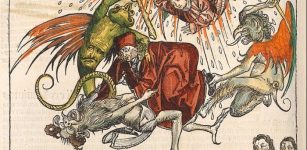 Simon Magus ‘The Magician’ Who Faked Death And Resurrection
Featured Stories | Feb 17, 2022
Simon Magus ‘The Magician’ Who Faked Death And Resurrection
Featured Stories | Feb 17, 2022 -
 Yayoi People (Korea) Interbred With Jomon People (Japan) Giving Birth To Ancestral Group Of Modern Japanese People
News | Oct 17, 2024
Yayoi People (Korea) Interbred With Jomon People (Japan) Giving Birth To Ancestral Group Of Modern Japanese People
News | Oct 17, 2024 -
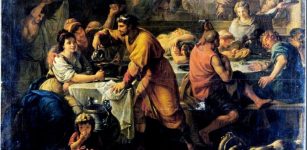 Saturnalia Feasts In Roman Empire
Ancient History Facts | Jun 30, 2018
Saturnalia Feasts In Roman Empire
Ancient History Facts | Jun 30, 2018 -
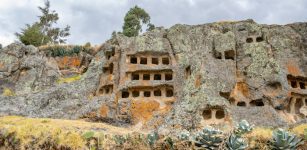 Fascinating Artificial Caves Of Ventanillas de Otuzco And Its Secret Passageways – Pre-Inca Necropolis Of The Cajamarca Culture
Featured Stories | Feb 5, 2022
Fascinating Artificial Caves Of Ventanillas de Otuzco And Its Secret Passageways – Pre-Inca Necropolis Of The Cajamarca Culture
Featured Stories | Feb 5, 2022 -
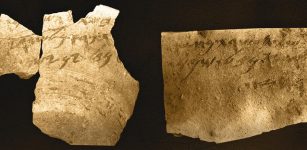 Two Scribes Penned 8th Century ‘Samaria Ostraca’ Inscriptions Unearthed In Samaria
Archaeology | Jan 23, 2020
Two Scribes Penned 8th Century ‘Samaria Ostraca’ Inscriptions Unearthed In Samaria
Archaeology | Jan 23, 2020 -
 Is There An Ancient Secret Connection Between The Statue Of Liberty And The Anunnaki Goddess Inanna?
Featured Stories | Sep 28, 2018
Is There An Ancient Secret Connection Between The Statue Of Liberty And The Anunnaki Goddess Inanna?
Featured Stories | Sep 28, 2018 -
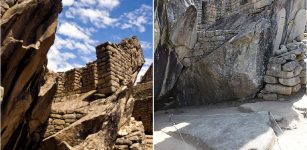 Unique Temple Of The Condor In Machu Picchu: 3D Spectacular Inca Stonemasonry
Civilizations | Sep 21, 2016
Unique Temple Of The Condor In Machu Picchu: 3D Spectacular Inca Stonemasonry
Civilizations | Sep 21, 2016 -
 Bizarre Devil’s Tramping Ground In North Carolina Is Avoided By People And Animals
Featured Stories | May 1, 2019
Bizarre Devil’s Tramping Ground In North Carolina Is Avoided By People And Animals
Featured Stories | May 1, 2019 -
 Ancient Brewing And Natufian Rituals – What Came First, Beer Or Bread?
Archaeology | Sep 14, 2018
Ancient Brewing And Natufian Rituals – What Came First, Beer Or Bread?
Archaeology | Sep 14, 2018 -
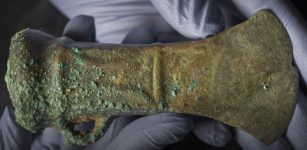 Mysterious Havering Hoard – Largest Ever Bronze Age Hoard Discovered In London
Archaeology | Oct 21, 2019
Mysterious Havering Hoard – Largest Ever Bronze Age Hoard Discovered In London
Archaeology | Oct 21, 2019 -
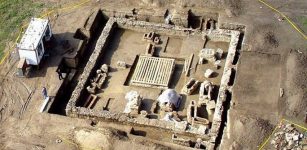 Viminacium Ancient Roman Camp: Sarcophagus With Skeletons, Rich Grave Goods Found In Serbia
Archaeology | Jun 5, 2018
Viminacium Ancient Roman Camp: Sarcophagus With Skeletons, Rich Grave Goods Found In Serbia
Archaeology | Jun 5, 2018 -
 New York Was Once Called New Amsterdam – History Behind The Change Of Name
Ancient History Facts | Jan 14, 2017
New York Was Once Called New Amsterdam – History Behind The Change Of Name
Ancient History Facts | Jan 14, 2017 -
 Surtshellir Cave Reveals How Vikings Attempted To Prevent Ragnarök – Doom Of The Gods
Vikings | Jul 17, 2023
Surtshellir Cave Reveals How Vikings Attempted To Prevent Ragnarök – Doom Of The Gods
Vikings | Jul 17, 2023 -
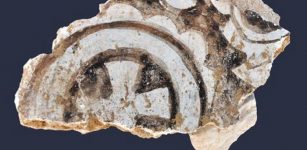 One Of Egypt’s Oldest Christian Churches Discovered By Polish Archaeologists
Archaeology | May 31, 2019
One Of Egypt’s Oldest Christian Churches Discovered By Polish Archaeologists
Archaeology | May 31, 2019 -
 Leshy: Master Of Forest And Wildlife In Slavic Beliefs
Featured Stories | Mar 25, 2016
Leshy: Master Of Forest And Wildlife In Slavic Beliefs
Featured Stories | Mar 25, 2016


